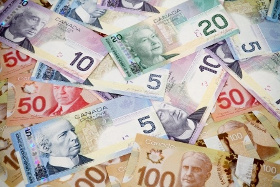The optimism about Europe has left markets and traders were leaving riskier currencies, especially the euro. As a result, the Canadian dollar fell versus the “safe” yen, but gained against the euro.
The decline of most risky currencies followed the big jump after the plans for dealing with Europe’s crisis were revealed. Some analysts interpret such performance as a natural correction after an excessive rally, not as reverse of the trend. That’s to be seen, but it’s true that the loonie, as Canada’s currency is nicknamed, erased almost all its losses against the greenback and reversed the trend versus the yen, starting move to the upside.
Fitch Ratings made the statement that caused some nervousness among Forex traders. Rating agencies were always viewing in a bad light participation of bondholders and private investors in the rescuing effort and Fitch continued this trend announcing that the 50 percent haircut of the Greek debt can be considered a default:
An EU invitation to private investors in Greek government debt to exchange their bonds for new debt with a 50% lower notional value would likely result in a
post-default rating in the ‘B’ category or lower depending on private creditor participation.
USD/CAD closed at 0.9912 near its opening of 0.9909, while during the trading session the currency pair climbed to 0.9968. EUR/CAD closed at 1.4022 (the low of the day) after opening at 1.4063 and rising to the daily maximum of 1.4115. CAD/JPY closed at 76.41, following the opening at 76.58 and drop to the daily low of 75.94.
If you have any questions, comments or opinions regarding the Canadian Dollar,
feel free to post them using the commentary form below.



Be First to Comment